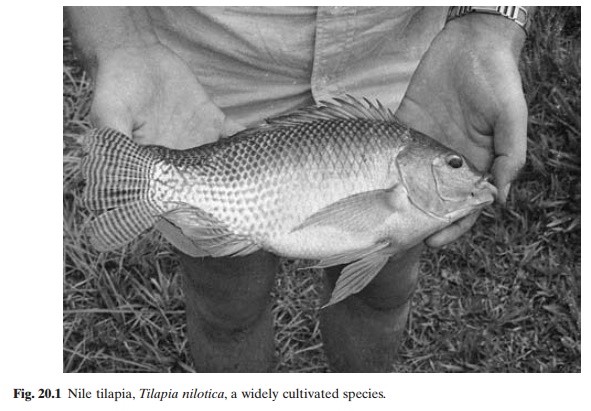Chapter: Aquaculture Principles and Practices: Tilapias
Feeds and feeding - Tilapias
Feeds and feeding
The need to grow tilapia to a marketable size in a short time has been
pointed out earlier. A variety of feedstuffs have been used in tilapia ponds,
including plant leaves, rice bran, oil seeds and oil cakes, copra wastes,
manioc and brewery wastes. Culturists have in some cases used chicken diets
(often mixed with protein-rich ingredients) or, rarely, the more expensive
trout feeds. But in the majority of cases feeds are prepared on the farm using
locally available ingredients. A simple inexpensive formulation used in the
Philippines consists of 65 per cent rice bran, 25 per cent fish meal and 10 per
cent copra meal. Another formulation tried in the Central African Republic
consisted of cotton seed oil cake (82 per cent), wheat flour (8 per cent),
cattle blood meal (8 per cent) and bicalcium phosphate (2 per cent). Coche
(1982) cited the feed formulations containing 20–22 per cent protein used in
Ivory Coast, consisting of 61–65 per cent rice polishings, 12 per cent wheat
middings, 18 per cent peanut oil cake, 4–8 per cent fish meal and 1 per cent
oyster shell.

Related Topics